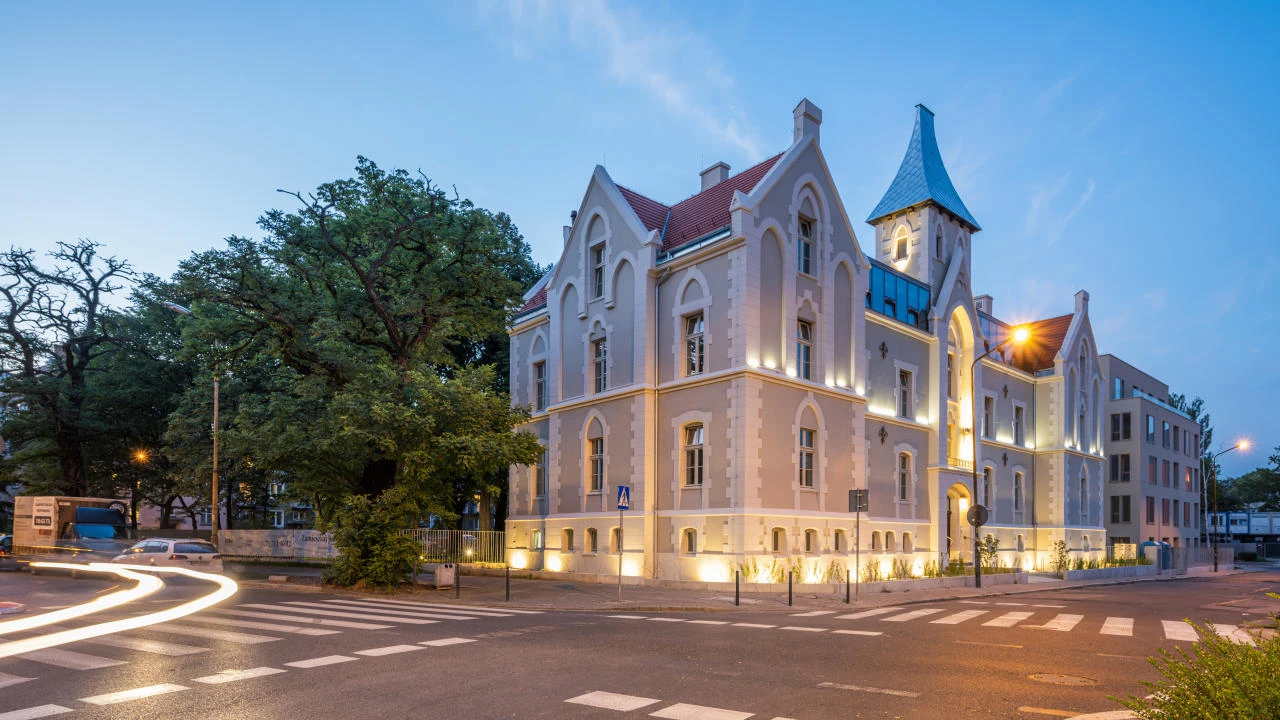Is renovation the most future-oriented trend?
Renovating existing buildings helps reduce the harmful environmental impact of construction processes when new buildings are erected. Learn about the key benefits of renovation – one of the most future-oriented trends.
The progressing climate change is driving the search for new solutions, including in the area of architecture. Renovating, modernising and revitalising buildings is becoming more and more popular, not least due to the energy transition targets set by the European Union. Restoring a building, giving it an attractive appearance, incorporating modern, environmentally friendly solutions and adapting it to serve a completely new function are all trends that are of key importance today in view of a looming climate disaster.
Environmental impact
Reducing the number of buildings being built benefits the environment. Today’s construction industry attaches great weight to ecology, but it is nevertheless impossible to eliminate all factors negatively affecting our environment. Renovating and revitalising, i.e. restoring and repurposing existing, should be prioritised. This needs to be done in such a way that they become more environmentally friendly and improve the comfort of their users. This is one of the EU’s priorities.

DEO Plaza, Gdańsk, Poland. Systems used: EXTRABOND, MB-77HS HI, MB-78EI, MB-78EI DPA, MB-86 SI, MB-86 ST, MB-SLIMLINE, MB-SR50N EFEKT, MB-SR50N EI, MB-SR50N HI+, MB-SR50N OW.
Influence on urban planning
In large cities, there are fewer and fewer plots of land available to investors, while at the same time, the most attractive districts often contain undeveloped buildings that no longer fulfil their purpose. Renovating such structures is often not a straightforward task, and could be potentially plagued by technical, logical or legal challenges. Still, it is a task worth pursuing.
The current trends such as ecology and recycling are changing how we perceive the world. Societies are becoming increasingly aware that perpetual production is not the way forward and that care must be taken to ensure proper end-of-life for what has been manufactured. This premise also applies to buildings. Refurbished and repurposed post-industrial sites or lofts stand out and have their own character and are now highly appreciated. Coupled with new, environmentally friendly technologies, they are becoming an attractive and comfortable place to live and spend free time.
Comfort of living
Renovating and revitalising existing buildings improves people’s living comfort. Usually, such buildings are situated in attractive areas, and gain new functions once renovated. Creating multi-purpose spaces that meet all the needs of the residents is now a popular trend. Self-sufficient and multifunctional neighbourhoods are becoming safe and comfortable places to live. They combine residential, commercial, educational and cultural functions. As a result the neighbourhood attracts more people at different times of the day, which improves safety and also results in better functioning of local businesses. This approach aligns with the trend of 15-minute cities: everything you need to live should be within a 15-minute walk of where you live. As a result, residents no longer have to rely on cars as their main form of transport, reducing traffic jams and emissions.

Ogrody Graua, Wrocław, Poland. Systems used: MB-SLIMLINE.
Availability of solutions
The market is abundant with solutions that combine environmental care, high quality workmanship and durability, as well as design that matches the style of the buildings being renovated. It is a good idea to use aluminium systems, which offer extensive design options, such as the possibility to bend curves and give aluminium sections the desired shape, characteristic of older structures. Aluminium is also a highly environmentally friendly building material that can be recycled repeatedly without any loss of properties or changes to its structure.
One example of such a solution is the MB-SLIMLINE system from Aluprof, which makes it possible to replace old-style steel windows, while giving them a similar appearance when viewed from the outside and increasing the thermal insulation of the partition.
Another solution from that manufacturer is the MB-FERROLINE system, which can be useful when used in buildings that are under historic monument protection. The MB-FERROLINE system offers renovation frames, allowing new joinery to be installed without having to remove the old frames, significantly reducing the risk of damage to the brickwork around the windows.
INDUSTRIAL solutions, on the other hand, are used for openable and fixed windows with vertical, horizontal or diagonal muntin bars. With their distinctive shape on the outside, old steel windows can be replaced without changing the external appearance of the building. A thermally insulated system prevents heat loss through the windows, which is crucial in a modernised building.
Let’s build a better future
Amid the increasing scarcity of available land, societies’ growing environmental awareness and changing needs and lifestyles, renovating existing buildings has become one of the most forward-looking trends. It facilitates swift and effective prevention of the climate crisis as well as achieving climate neutrality, which is now a policy priority for European countries.
